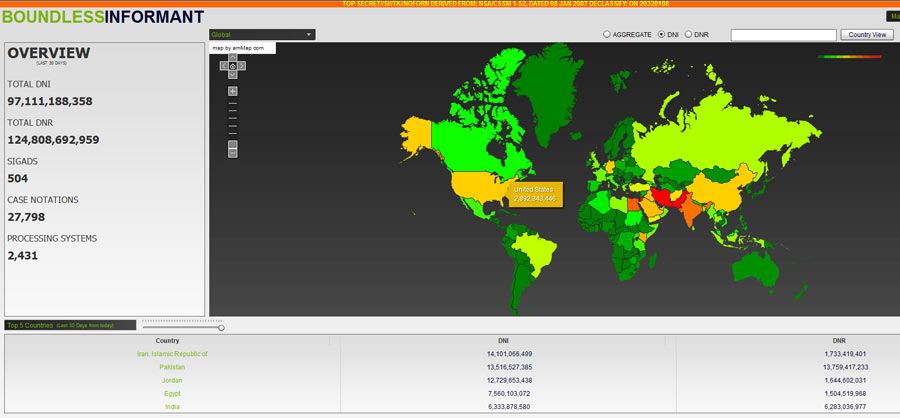400 Words to Get Up to Speed on Edward Snowden, the NSA And Government Surveillance
NSA’s PRISM, monitoring the internet, and the recent history of domestic surveillance
/https://tf-cmsv2-smithsonianmag-media.s3.amazonaws.com/filer/2013061010003006_10_2013_prism-logo.jpg)
Late last week the publication of two stories—one by the Washington Post, the other by the Guardian—began a weekend filled with revelations and debate about a secret program by the U.S.’s National Security Agency—PRISM. The reports were based on top secret documents provided to the Guardian and the Post by a whistleblower.
Here’s How It Started
According to the Guardian‘s reports last Wednesday we learned that U.S. cell phone carrier Verizon must now give the NSA “information on all calls in its systems.”
Further reporting expanded PRISM’s supposed powers. The Washington Post added that nine companies—Microsoft, Yahoo, Google, Facebook, PalTalk, AOL, Skype, YouTube and Apple—provide information to the NSA, with the New York Times expanding on the relationship between PRISM and these companies. According to the Times, the companies “opened discussions with national security officials about developing technical methods to more efficiently and securely share the personal data of foreign users in response to lawful government requests.” The materials handed over include “audio and video chats, photographs, e-mails, documents, and connection logs” says the Post. The Guardian expands on its reports, outlining the NSA’s tool “Boundless Informant.”

Then the Whistleblower Came Forward
Edward Snowden, the whistleblower who provided the top secret documents to the Guardian and the Post, goes public at his own request. A profile by the Guardian reveals that he is “a 29-year-old former technical assistant for the CIA and current employee of the defence contractor Booz Allen Hamilton.” Snowden sits for a video and a Q&A. According to reports, Snowden, in anticipation of leaking the documents, has moved to Hong Kong. Hong Kong has a bilateral extradition treaty with the U.S., though it has the “right of refusal in the case of political offences.”
What’s Next?
U.S. lawmakers “called on Sunday for a review of the government’s monitoring of phone and Internet activities, and one Democrat urged a reopening of the Patriot Act,” says Reuters. President Obama has responded to the events, and Sen. Dianne Feinstein, head of the Senate Intelligence Committee has said that she is “‘open’ to hearings on surveillance programs.”
I Want More, Where Should I Look?
Much has been written in the past four days on the topic, but these five stories are a good place to start:
“U.S., British intelligence mining data from nine U.S. Internet companies in broad secret program” – Barton Gellman and Laura Poitras for the Washington Post
“Edward Snowden: the whistleblower behind the NSA surveillance revelations” – Glenn Greenwald, Ewen MacAskill and Laura Poitras for the Guardian
“Boundless Informant: the NSA’s secret tool to track global surveillance data” – Glenn Greenwald and Ewen MacAskill for the Guardian
“Why the NSA has access to 80% of online communication even if Google doesn’t have a ‘back door’” – Christopher Mims for Quartz
“Mass Surveillance in America: A Timeline of Loosening Laws and Practices” – Cora Currier, Justin Elliott and Theodoric Meyer for ProPublica
More from Smithsonian.com:
/https://tf-cmsv2-smithsonianmag-media.s3.amazonaws.com/accounts/headshot/smartnews-colin-schultz-240.jpg)
/https://tf-cmsv2-smithsonianmag-media.s3.amazonaws.com/accounts/headshot/smartnews-colin-schultz-240.jpg)